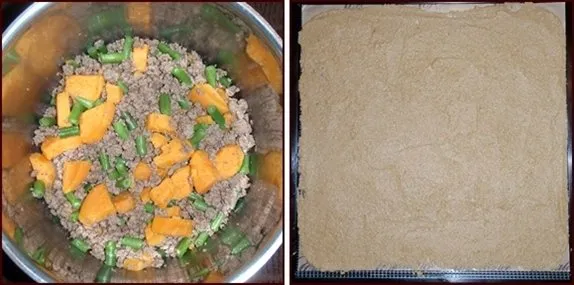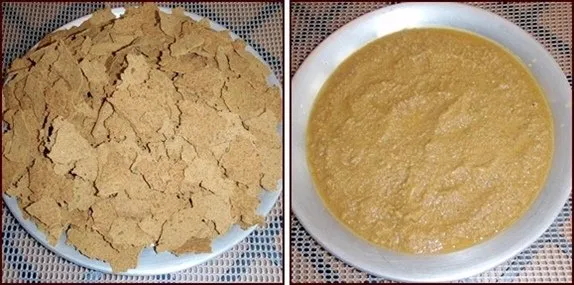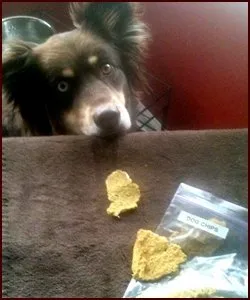As a dedicated pet parent, ensuring your dog receives nutritious, safe, and convenient meals, especially when on the go, is paramount. Dehydrated Dog Food offers an innovative solution, combining the benefits of homemade goodness with the practicality required for active lifestyles like backpacking or even just busy days. This method allows you to transform fresh ingredients into lightweight, shelf-stable meals and treats, providing your furry friend with high-quality nourishment that’s easy to store and prepare.
Whether you’re an avid backpacker looking to reduce pack weight or simply seeking healthier, homemade alternatives to commercial kibble, understanding the process of creating dehydrated dog food can be a game-changer. This comprehensive guide will walk you through the essential ingredients, safe preparation techniques, and delicious recipes, all compiled from the collective wisdom of experienced dog owners and canine nutrition enthusiasts.
Why Choose Dehydrated Dog Food?
Dehydrating dog food and treats offers several compelling advantages, making it an excellent option for many dog owners. Firstly, it significantly reduces the weight and bulk of food, which is incredibly beneficial for activities like backpacking, camping, or any travel where space and weight are concerns. Imagine carrying lightweight pouches of food instead of heavy cans or large bags of kibble.
Secondly, dehydrated food retains much of the nutritional value of its fresh ingredients because the drying process uses low heat, preserving enzymes and vitamins that can be lost in high-temperature cooking. This allows for a more nutrient-dense meal, crucial for active dogs whose caloric needs increase during strenuous activities. You can also rehydrate the food with water, creating a flavorful gravy that many dogs find irresistible, or offer it dry as a crunchy snack. This flexibility in serving makes it a versatile option for various situations.
Essential Ingredients for Dehydrating Dog Food
The foundation of a healthy dehydrated dog food recipe lies in selecting the right ingredients. Just like humans, dogs thrive on a balanced diet of lean proteins, beneficial carbohydrates, and nutrient-rich vegetables. When preparing food for your canine companion, always prioritize fresh, high-quality components.
Proteins
Lean meats are the cornerstone of any good dog diet. Excellent choices include pork loin, ground beef (with less than 10% fat), boneless, skinless chicken breasts or thighs, and turkey. The leanness of the meat is crucial, as excess fat can turn rancid during storage, compromising the food’s shelf life. It’s recommended to blot off any residual grease after cooking to minimize fat content.
Dog-Friendly Vegetables and Fruits
Incorporating a variety of vegetables adds essential vitamins, minerals, and fiber to your dog’s diet. Safe and highly recommended vegetables include sweet potatoes, green beans, carrots, corn, broccoli, kale, spinach, zucchini, and pumpkin. For a digestive boost, some owners add apples. Sliced oranges, bananas, and watermelon can also be safely included in moderation.
Foods to Absolutely Avoid
While many human foods are safe for dogs, some are highly toxic and must be avoided at all costs when preparing dehydrated dog food. These include:
- Onions
- Garlic
- Grapes and raisins
- Chocolate
- The seeds and pits of fruits
Additionally, while a small amount of salt is necessary for a dog’s diet, excessive salt can lead to digestive issues and dehydration. Avoid feeding salty human foods or using sweet and salty marinades on jerky. Even though dogs often love cheese, it should be given in moderation as some dogs can be lactose intolerant. For a comprehensive list of foods to avoid, consult reputable sources like WebMD.
Safe Preparation and Dehydrating Meat for Dogs
Ensuring the safety and longevity of your dehydrated dog food requires careful preparation, especially when it comes to meat. Proper cooking and dehydration techniques are critical to eliminate pathogens and minimize spoilage risks.
Pre-Cooking Meat
It is imperative to cook meat thoroughly before dehydrating it to kill potential pathogens such as Salmonella or Trichinella spiralis. For ground meat, cook it in a frying pan with minimal oil until it’s completely browned and no pink remains. For slices of beef, chicken, or turkey, baking them in a single layer at 350°F (177°C) for about ten minutes is effective. After cooking, always blot off any fat with paper towels. The less fat, the better the food will store.
One technique for cooking chicken involves pressure-cooking, which can tenderize the meat while preparing it for dehydration. This method ensures the chicken is fully cooked and ready for the next step in the dehydration process.
 Cooked ground beef and vegetables for dehydrated dog foodCooked ingredients for dehydrated dog food before blending and spreading on dehydrator trays.
Cooked ground beef and vegetables for dehydrated dog foodCooked ingredients for dehydrated dog food before blending and spreading on dehydrator trays.
Dehydrating Process
Once cooked, the meat needs to be dehydrated at the correct temperature until it is hard and completely dry, both inside and out. The recommended temperature range for dehydrating cooked meat for dogs is 145°F (63°C) to 155°F (68°C). Drying times can vary depending on your dehydrator model and environmental factors like humidity, but typically expect around six hours.
Some experienced dehydrators use an alternative method where they dehydrate raw meat strips at the highest setting (155°F/68°C to 165°F/74°C) and then finish by baking the dried meat in an oven at 250°F (121°C) for ten minutes to ensure any lingering bacteria are eliminated. It’s worth noting that if your dog is accustomed to a raw diet, commercially available freeze-dried raw dog food is an option that avoids high temperatures. For delicious, healthy homemade dog food, explore options like [orijen small breed dog food review](https://dogcarestory.com/orijen-small-breed-dog-food-review/) to ensure balanced nutrition for your dog.
Homemade Dehydrated Dog Food Recipes
Crafting your own dehydrated dog food at home allows for complete control over ingredients and ensures your dog gets the best possible nutrition. Here are a few trail-tested recipes that have proven popular among the dog-owning community.
1. Pork & Vegetables Meal
This recipe, shared by Richard Tofflemire and enjoyed by his dogs Sheldon and Amy, offers a wholesome and balanced meal.
Ingredients:
- 750 g cooked pork loin
- 470 g mashed potatoes (skin on)
- 150 g raw carrots
- 150 g frozen corn, thawed
- 150 g unsweetened applesauce
- 150 g salt-reduced tomato sauce
- 9 g flax seed oil
- 9 g safflower oil
- 37 g honey
- 37 g Hilary’s Blend supplement (optional, consult your vet)
Preparation:
- Run the carrots and corn through a blender until finely processed.
- Combine all ingredients in a large bowl and mix thoroughly.
- Spread the mixture thinly on dehydrator sheets. Use a rolling pin and a top sheet to achieve a consistent, thin layer for even drying.
- Dehydrate at recommended temperatures until completely dry and brittle.
- Once dry, break the food into small, pea-sized pieces to facilitate quick rehydration.
This meal is excellent served rehydrated or dry, depending on your dog’s preference. For optimal organization, divide the cooked food into single-serving sizes before dehydrating, then package individual servings once dried.
2. Dog Bark Stew
This recipe from Chef Glenn is a versatile and nutrient-packed option for your dog.
Ingredients:
- 1¼ lbs. lean ground beef (567 g) (cooked ground turkey or chicken can be substituted)
- ¾ lb. sweet potato (1 large, 340 g) (pumpkin or butternut squash can be substituted)
- ¼ lb. green beans (1 handful, 113 g) (carrots, corn, broccoli, kale, spinach, and zucchini can also be used)
- An apple can also be included for added fiber and digestive benefits.
Preparation:
- Peel and cut sweet potato into chunks. Begin boiling in two cups of water.
- Trim green beans and cut into smaller pieces. Add to the pot with the sweet potato when the potato chunks are halfway softened.
- Continue cooking until the sweet potato is soft enough to mash easily.
- Drain off the cooking water, but retain it for later use.
- Cook ground beef in a frying pan until browned. Drain and pat dry with paper towels to remove excess fat.
- Add the cooked ground beef to the pot with the sweet potato and green beans.
- Add 1½ cups of the retained cooking water and mash with a potato masher.
- Divide the mush into two or three parts and blend until smooth.
- Spread thinly on dehydrator trays covered with nonstick sheets. Dry at 145°F (63°C) for approximately six hours. After four or five hours, flip the “bark” over and continue drying without the nonstick sheets.
Dog Bark is not brittle when dry, making it a safe option that won’t pose a choking hazard. It should feel completely dry and break easily into pieces. A good serving size is typically half a cup, but adjust based on your dog’s individual caloric needs and activity level. This recipe provides a fantastic base for creating [dog bark soup](https://www.backpackingchef.com/dehydrating-dog-food.html#dogbarkstew) as well, ensuring your pup stays hydrated on the trail.
 Dehydrated Dog Bark Stew piecesDehydrated dog bark (left) and a serving of rehydrated dog bark (right), demonstrating the before and after of this nourishing meal.
Dehydrated Dog Bark Stew piecesDehydrated dog bark (left) and a serving of rehydrated dog bark (right), demonstrating the before and after of this nourishing meal.
Dehydrating Canned Dog Food: Is It a Good Idea?
Dehydrating canned dog food might seem like a convenient option, especially if your dog is particular about their regular brand. While it is technically possible, there are several caveats to consider before opting for this method.
The most significant concern with canned dog food is its often high fat content. Even if a can lists only 5-6% fat, the actual fat in the solid components can be much higher due to added water. High fat content in dehydrated food significantly increases the risk of it turning rancid during storage, reducing its shelf life and potentially causing digestive upset for your dog. If you choose to dehydrate canned food, it’s generally recommended to store individual servings in the freezer and reserve them for shorter backpacking trips.
Process for Dehydrating Canned Dog Food:
- Homogenize: Use a potato masher to thoroughly mash the canned dog food, ensuring a consistent texture.
- Spread: Spread the mashed food thinly and evenly on dehydrator trays. Portion according to your dog’s serving size.
- Dehydrate: Dry at 155°F (68°C) until no moisture remains. Drying times can vary from six to eight hours depending on the food’s consistency.
- Storage: Package individual servings in airtight bags and store in the freezer, especially if the fat content is high.
While dehydrating canned dog food is an option, it’s generally a better choice to prepare and dehydrate homemade recipes rich in lean meats and vegetables. These homemade options typically have lower fat content and offer more control over the nutritional balance.
Homemade Dehydrated Dog Treats
Beyond full meals, creating dehydrated dog food treats at home is a fantastic way to reward your dog with healthy, preservative-free snacks. These treats are particularly useful for training or as quick energy boosts during hikes. Consider adding homemade treats like [chew toys that dogs can eat](https://dogcarestory.com/chew-toys-that-dogs-can-eat/) to their regimen for dental health and enjoyment.
1. Bacon & Cheese Canine Cookies
These highly popular cookies are sure to get your dog’s tail wagging!
Ingredients:
- 1 cup oat flour
- 1 cup brown rice flour
- ½ cup shredded cheese (cheddar, asiago, and parmesan blend work well)
- 6 slices bacon, cooked and crumbled
- 1 egg
- ¾ cup water
Preparation:
- Mix all ingredients thoroughly in a bowl.
- Form the mixture into 1-inch balls.
- Flatten and score each ball, making it easy to break them in half for smaller portions.
- Bake at 375°F (190°C) for 30 minutes until golden brown and firm.
- For extra crispness and longer shelf life, you can lightly dehydrate them further after baking.
2. Chicken Chips
A simple yet highly effective treat, these chicken chips are a favorite.
Ingredients:
- 1 package boneless & skinless chicken thighs or breasts
- 2 cups of frozen mixed vegetables (carrots, green beans, peas, etc.)
Preparation:
- Cook chicken and vegetables in a large pot with enough water to cover the ingredients.
- Allow the mixture to cool.
- Puree in a food processor with some of the cooking water. Ensure the mixture is not too watery, as thicker chips tend to be stronger. Using breast or thigh meat rather than ground chicken can also result in a better texture.
- Spread the puree thinly on dehydrator trays.
- Dehydrate until fully dry and break into chip-like pieces.
These chips can be given as a dry snack or rehydrated to create a flavorful gravy to accompany hard kibble.
 A dog enjoying a homemade chicken and vegetable treat.A close-up of delicious homemade chicken and vegetable chips, a perfect treat for your canine friend.
A dog enjoying a homemade chicken and vegetable treat.A close-up of delicious homemade chicken and vegetable chips, a perfect treat for your canine friend.
3. Liver Treats for Older Dogs (Medicated)
Holly Bryant shares a recipe for medicated liver treats that are great for older dogs.
Ingredients:
- 1 lb. liver (chicken, turkey, or calf) (454 g)
- 2 Tbsp. oil or grease (e.g., bacon grease)
- 1 bunch kale
- 2 carrots
- 12-15 glucosamine chondroitin tablets (dissolved)
Preparation:
- Dissolve the glucosamine chondroitin tablets in one cup of warm water.
- Sauté the liver in oil until cooked through. Set aside.
- Chop and steam vegetables until tender.
- Mix all ingredients together in a food processor or blender until smooth. Add extra water if needed to achieve a cookie-dough consistency.
- Form into two-tablespoon scoops, lightly flatten, and bake on parchment paper at 350°F (180°C) for about twelve minutes, or until set and lightly browned.
- Dehydrate or store in the freezer.
These treats offer a cost-effective way to provide joint supplements to older dogs.
Important Considerations for Feeding Dehydrated Dog Food on the Trail
When planning for outdoor adventures with your dog, careful consideration of their dietary needs is crucial. A Canine Nutritionist, Sharon Smith, offers valuable advice for feeding dogs while hiking and camping.
Gradual Introduction of New Foods
Before embarking on any trip, introduce any new foods or treats incrementally into your dog’s diet well in advance. This allows their digestive system to adjust and minimizes the risk of upset stomachs or refusal to eat on the trail.
Increased Caloric Needs
Just like humans, dogs’ caloric requirements increase significantly when backpacking or engaging in strenuous activities. It’s not just about quantity; they need more dense, quality nutrients. If home-cooking and dehydrating, ensure the diet is AAFCO-balanced, potentially working with a qualified Canine Nutritionist.
Portion Control
Measure your dog’s food accurately and pre-portion daily rations for both meals and treats. Using individual cups or bags for daily treats helps prevent overfeeding, as it’s easy to lose track of how many treats have been given throughout the day.
Hydration is Key
Always ensure your dog has access to enough clean, fresh, filtered water. Watch their intake carefully, as they may need more water than you expect, especially in warmer conditions or during high activity. Dehydration can be a serious risk on the trail.
Storing Dehydrated Dog Food and Treats
Proper storage is crucial for maintaining the quality, safety, and shelf life of your dehydrated dog food and treats. The goal is to protect them from moisture, oxygen, and pests. Store them similarly to how you would store dehydrated human food.
Airtight containers, such as jars with oxygen absorbers, are ideal for long-term storage. For foods with higher fat content, it’s best to store them in the freezer in sealed bags until you are ready for a short trip. To streamline meal preparation during your adventures, package your dog’s dehydrated meals and treats in individual serving sizes. This ensures convenience and helps maintain freshness. To learn more about various dog food options and their benefits, including freeze-dried and kibble, consider reading [horizon pulsar dog food reviews](https://dogcarestory.com/horizon-pulsar-dog-food-reviews/) and [the pride dog food reviews](https://dogcarestory.com/the-pride-dog-food-reviews/).
Conclusion
Creating dehydrated dog food and treats offers a fantastic way to provide your canine companion with nutritious, convenient, and safe meals, particularly for active lifestyles and outdoor adventures. By carefully selecting lean ingredients, adhering to proper cooking and dehydration techniques, and understanding your dog’s nutritional needs, you can ensure they receive high-quality sustenance on the go. Always prioritize food safety, gradual introduction of new foods, and adequate hydration to keep your furry friend healthy and happy. With the recipes and advice provided, you’re well-equipped to embark on a journey of homemade, healthy dog food preparation that strengthens the bond with your beloved pet. Explore more about caring for your puppy by reading our guide on [kong puppy](https://dogcarestory.com/kong-puppy/).
